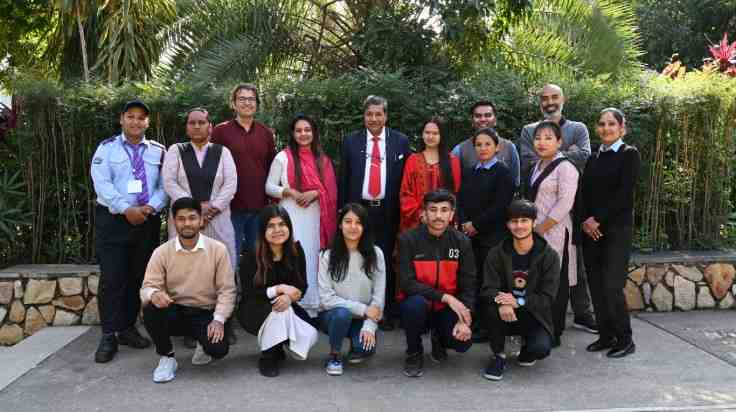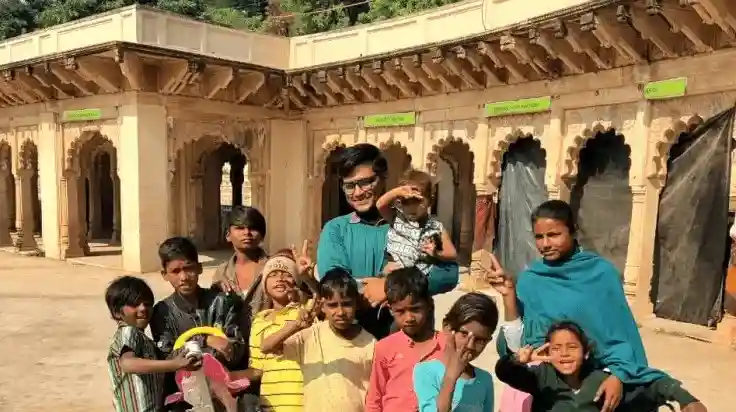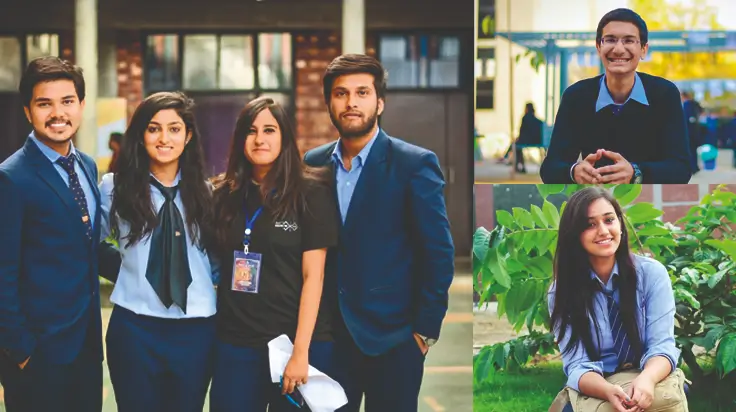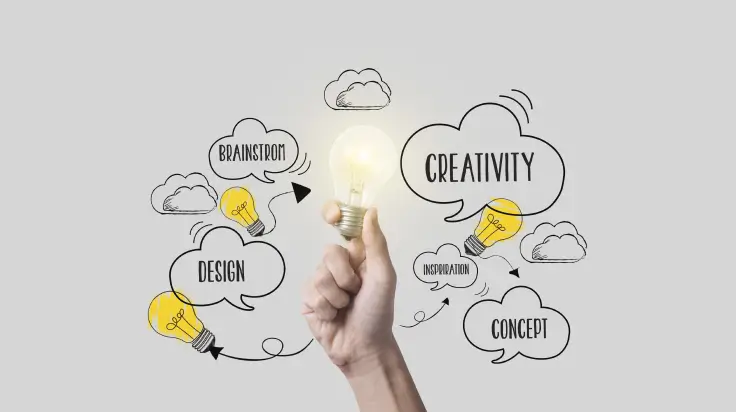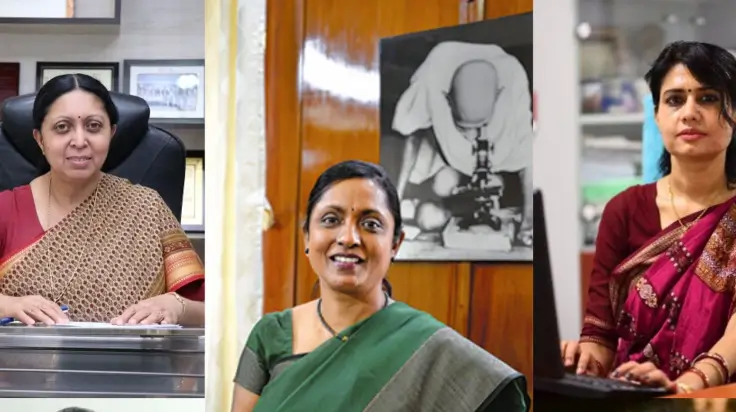Microsoft Ux Director on the expanding role of designers, and why user need is at the core of it
- Ekta Kashyap
- Published 10/02/2022

At the sixth edition of the CII Design Talk Series, Parag Trivedi, User Experience (Ux) Director, Microsoft, in conversation with Manisha Mohan, Dean, UPES School of Design, discussed co-influencing creativity and technology through design
When global stalwarts come together to share their journey, fine and acute insights abound. One such interaction was hosted by ‘CII Design Talk Series’, a platform where industry doyens spell their success formula and celebrate design from across the world. The initiative is conceptualised to sensitise the Indian stakeholders about the benefits of investing in design.
Organised by the Confederation of Indian Industries (CII) in collaboration with UPES and the World Design Organisation, the sixth edition of the series was aimed at promoting and accelerating design towards leveraging economic growth and supporting society, making businesses more competitive and public services more effective.
The welcome address was given by Professor Pradyumna Vyas, Senior Advisor at CII, who has more than 36 years of professional and teaching experience in different spheres of design. In 2019, he was awarded the honour of ‘Good Design Fellow’ by the Japan Institute of Design Promotion, Tokyo.
Professor Vyas said, “Several corporates have already gone into design thinking activities for innovation. We are also looking at the Micro, Small & Medium Enterprises (MSME) sector and start-ups, and how they can use strategic design thinking for their business developments.”
He welcomed the panellists, Parag Trivedi, User Experience (Ux) Director, Microsoft, and Manisha Mohan, Dean, UPES School of Design. Parag is focussed on challenging the problems in the areas of productivity and learning. The solution spaces include content workflows, intelligence-powered cameras, and delightful experiences across end points for Microsoft customers. He uncovers insights by empathising with customers and creates solutions by leveraging design thinking and engaging with all stakeholders.
Excerpts of the discussion:
Manisha Mohan: Tell us about your journey. How did you get into design? Also, please reflect upon what User Experience (Ux) Design is all about.
Parag Trivedi: Since childhood, I used to observe things keenly – people, environment and objects. I used to love creating, whether it was carving wood or painting or building a working model. I was fortunate to get early guidance, inspiration and motivation from some great designers in the family. That is how I got into design.
I did my Master’s in Industrial Design from IIT Bombay IDC. I have been in this field for 24 years now. I started my career as an industrial designer in a consumer level company. Then I moved to software interaction design and worked in a few multinational companies. I was briefly in Japan for the Hitachi Global Design Studio to create and learn how they build advanced concepts. Then I joined GE Healthcare and started a design studio there. For the past four years, I have been at Microsoft, figuring out how to redefine productivity on mobile and leverage all the technologies to deliver a delightful experience.
Leveraging technology to deliver the right solution
The other question you had asked was about Ux design. In a general sense, Ux Design is about how you interact with the product such as a mobile application, website, or any software. Ux, however, is not limited to interacting with a software. It is one of the touchpoints in the journey of the overall experience – the end-to-end journey – which starts from uncovering an awareness of the solution. How do you buy it or install it, use it, and then upgrade or upsell or at the end, discard it? So, the actual journey is bigger than having only one touchpoint, which is when you use it. There are various touchpoints in the journey, and experience at each touchpoint matters.
The other dimensions of Ux are to understand the need that you are addressing, the context in which you are understanding the problem, and the emotional state of the users who are experiencing the solution. Hence, for every touchpoint, the context, the need, and the emotional state become crucial when we think about the overall Ux. Then, look at how you can leverage technologies to deliver the right solution at each touchpoint.
Manisha Mohan: We are living in a world of digital transformation. There are so many changes happening in technology, which are impacting the way we design products because users are interacting with products differently. There are innovations such as Metaverse, Virtual Reality and Artificial Intelligence. So many transformational changes are happening around us.
How can students prepare themselves for this rapidly changing world, where there are new challenges, new requirements from the users? What attributes do we need to build?
Parag Trivedi: Technology is continuously evolving, no doubt. The scenarios around us are changing. However, no matter what the technology, the fundamental thing in Ux design is to keep the user at the centre. As a designer, our ability to empathise with the end user and deeply understand the need, the mental modal, and the emotions they go through, that is kind of a constant. Technology will keep changing but we as designers must remain deep rooted with the users’ needs.
Having said that, technology is equally important because that is how we deliver solutions. Things are becoming intelligent. Artificial Intelligence (AI) is getting leveraged across industry. Therefore, peoples’ mental models are changing in terms of what they expect naturally for a certain solution to behave in a certain way.
Certain ways have become a new normal. If you are searching something on the web, and you have typed incorrectly, the search engine will still understand and give you the result. Now this is where the (Artificial) Intelligence is playing the role, but it has become a new normal. You would expect the system to correct the mistake and move on.
Everything is becoming intelligent and we as designers should consider the possibilities to leverage intelligence for making the experience better and simpler. We should not restrict ourselves to creating certain interfaces but expose ourselves to the possibilities of technology, which can really help solve problems in a far more effective way.
Weaving technology in the flow of design
Whenever we make something intelligent or use AI, it should naturally be even in the flow. It should not come in the way of you doing things. For example, in Microsoft PowerPoint, when you create a slide, then on the side it shows 4-5 layouts that you can choose. It is assisting you and not coming in the way.
The other aspect from technology perspective is the transition in interaction modality. For example, the use of voice interaction. Earlier, we would design a complex navigation system or try to simplify the navigation system. With voice, you can cut down the navigation level. You do not have to worry about how things have been structured in the system; you just say what you want.
Cameras have become intelligent. Once they see the object, they can give enough options for the user to act on. Use of voice, use of camera, and Metaverse, where you bring the physical and digital in a virtual environment have led to the evolution of interaction modalities. The future applications would leverage a multi-modal interaction, which will be close to how we interact human to human .
If you keep paying attention to humans and how they interact, technology will follow. See the advancements in terms of vision, voice, even metaphors, they all are taking us to a more natural way of interacting with the product. I can talk to a product, I can see, and the application can also respond to me.
The power of network
Now humans are far more connected than ever. You have networks getting built everywhere. That again opens the opportunities to deliver solutions more effectively by leveraging the strength of network. Thus, attention to intelligence, different interaction modalities, and the power of networking can heavily influence the way we build our product.
The way we build solutions is also changing. Now you are constantly learning. The moment your product is out, you are constantly getting data of how people are using it; how people are interacting with it. Even the design that you build is not a fixed design. It adapts based on how people are responding to it.
You enable those flexibilities in the design, which can adapt to user behaviour on the fly. You do not even have to intervene. Define the logic based on how people are reacting to the system and the system will adapt itself.
Manisha Mohan: Please give us some examples of your work throughout the years.
Parag Trivedi: At Bajaj, we were involved in styling. Say there is a room cooler this season, and in the next season we have to launch another. We will change the fascia to give it a new look. The role of a designer is to change the look and feel and solve the usability problem.
At GE, the nature of problem was driving outcome. We used to interact closely with large hospitals and our job was not only to design a certain medical equipment, but also consider how to help people drive the outcome.
Suppose you are designing a baby warmer. The primary goal is to reduce infant mortality rate. The objective is not to give one Computed Tomography (CT Scan machine) or Magnetic Resonance Imaging (MRI) machine to the hospital but help a hospital improve clinical efficacy or operational efficiency or patient experience.
There, the role of designers was to work closely with multiple stakeholders to understand the essential outcomes and then do an in-depth empathy exercise research. We would go to customer sites to see the process, map out the journey, and understand the needs of the stakeholders, the pain points and then get into the iteration of what intervention would make sense. It was far more than designing the interface of the device; it was about looking at the end-to-end cycle, which can lead to the desired outcome.
(The session has been edited for length and clarity)
Watch the full event here:
Ekta Kashyap
The writer is a part of the UPES editorial team
UPES Admission Enquiry
Subscribe to UPES Blogs
Join our community for exclusive stories, insights, and updates
By clicking the "Subscribe" button, I agree and accept the privacy policy of UPES.











